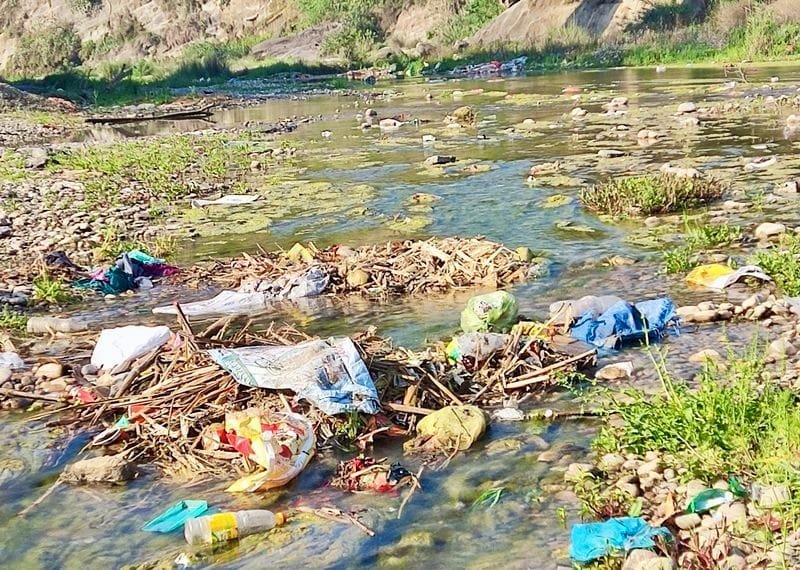Hamirpur, April 12: Once known for their pristine water, rivers and tributaries in Himachal Pradesh’s Hamirpur district are now choking with garbage—victims of years of official indifference and environmental neglect. The worsening pollution has not only degraded water quality but, in recent years, triggered outbreaks of epidemics in nearby villages.
The worst-hit streams include Maan Khud, Kunah Khud, and Bakar Khud—three major tributaries of the Beas River—now polluted due to unscientific mining, unchecked garbage dumping, and poor oversight.
Maan Khud flows through Barsar town and Nadaun, supplying water to over 100 villages. Kunah Khud, the longest among the three, stretches over 60 kilometres and serves more than 150 villages. Bakar Khud begins from hills near Samirpur and joins the Beas River at Sandhol.
Residents across the district voiced frustration over the declining state of the water sources. “No one is bothered to check the water quality that is supplied by Jal Shakti Vibhag,” said Ramesh Chand of Rangas village.
Saroj Kumari, from a village near Nalti, said the water once ran clear but now carries a foul stench. “The khud that had clear water is now flowing with stinking water,” she said, attributing part of the pollution in Kunah Khud to waste discharge from a treatment plant upstream near Hathali Khud.
Kuldeep Kumar of Pansai village pointed to several causes: illegal mining, open defecation, and public apathy. “The neglect is across the board—from authorities to locals,” he said.
Anil Joshi, Member Secretary of the Himachal Pradesh State Pollution Control Board, said the government had drafted a plan for maintaining river health. “Since Jal Shakti Vibhag operates multiple water supply schemes, its officials are responsible for ensuring clean sources,” he noted.
Neeraj Bhogal, Superintending Engineer of the Jal Shakti Vibhag, responded to the complaints, saying, “Every care is taken to ensure the quality of water supplied under district schemes. We regularly test water in departmental labs using the latest equipment and techniques.”
He added that public health remains a key priority for the department.

